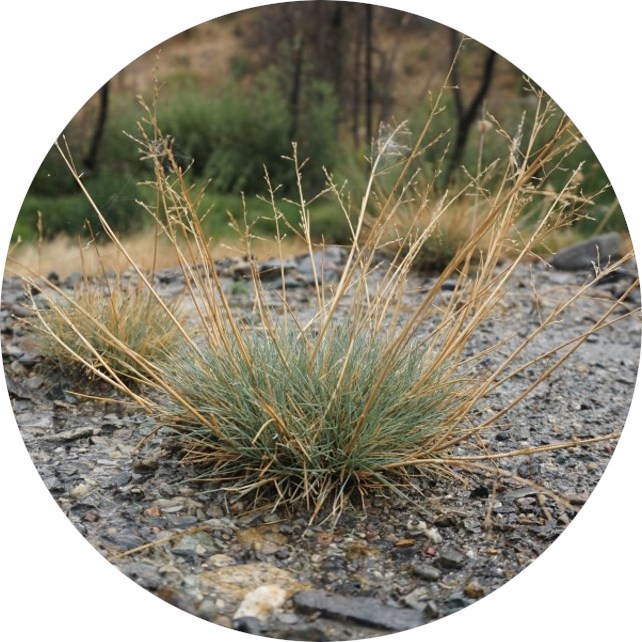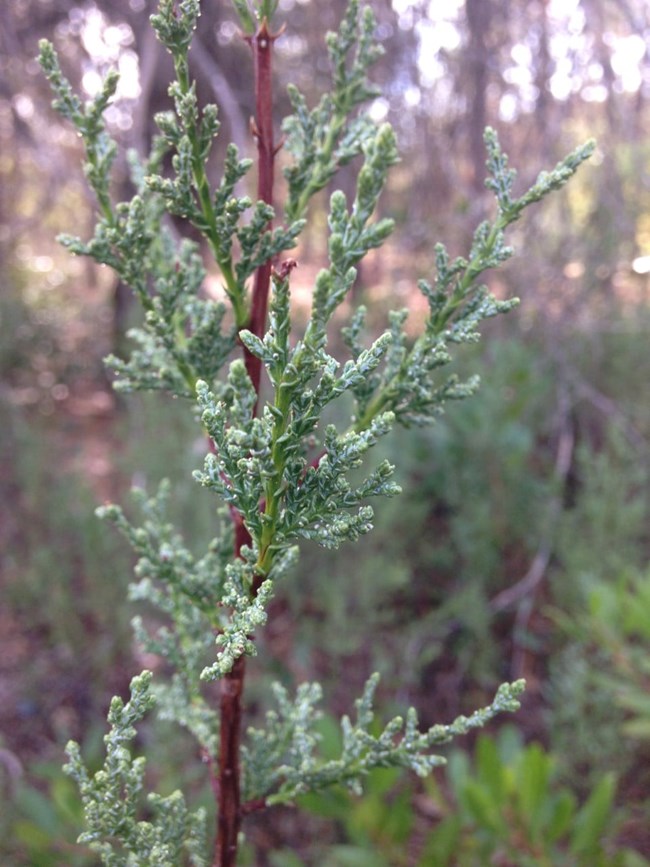
NPS photo. The Rich Habitats of WhiskeytownWhile Whiskeytown is celebrated for its lake-based recreation, it holds an equally significant status as a biodiversity hot spot. Positioned at the intersection of the California Chaparral and Woodlands ecoregion and the Klamath Mountains ecoregion, Whiskeytown National Recreation Area is home to a remarkable variety of habitats that support diverse plant and animal life. Factors such as fire frequency, soil chemistry, water availability, topography, climate, and land use history all play crucial roles in shaping the distribution and richness of ecological communities within and around the park.Resilience in Renewal: The Cycle of Fire and Forest GrowthWhat catches your eye first in this photo: the charred remnants of trees or the vibrant green of new growth? Both tell an essential story of forest life at Whiskeytown. Fire and regrowth are interconnected, forming an endless cycle that sustains the park’s biodiversity. Here, young pine, manzanita, and ferns emerge as symbols of resilience, revitalizing the landscape after the Carr Fire of 2018. This regrowth highlights nature’s remarkable ability to recover and adapt, ensuring the continuity of the ecosystem. Chaparral-Woodland, Mixed Forest, and Shady CanyonChaparral-woodland ecoregions thrive throughout much of the national recreation area. While chaparral and woodland environments can be distinct from each other, they more commonly interface and mix with each other - nature doesn’t always have hard boundaries, and this is certainly true at Whiskeytown.The chaparral plant community thrives on sunny south-facing slopes and open areas. A landscape characterized by extreme heat and dryness, the chaparral is dominated by shrub species rather than trees. Fire-adapted plants including chamise, toyon, and yerba santa are particularly common in the chaparral. In woodland that borders and mingles with chaparral, tree species such as grey pine, knobcone pine, and interior live oak often dominate. Klamath Mountains mixed forest communities are typically found in areas that are cooler and wetter, such as at the higher elevations of the park and on north-facing slopes. Here, ponderosa and sugar pines grow alongside black oak, tanoak, Douglas fir and chinquapin. Shady canyons can be considered an extension of the Klamath Mountains mixed forest. These areas are cooler, wetter and are less prone to fire than the sunny slopes, making them isolated refuges for amphibians, snails and other animals that are adapted to shade and moisture. These areas shelter a variety of plants that one would normally expect to find farther north. A few commons species of the park's shady canyons include bigleaf maple, thimbleberry and sword fern. Fire and the Never-Ending Circle of Biological LifeFire frequency plays an important role in plant community composition at Whiskeytown, and one good example of this can be found in the Knobcone pine. Like many of the plants found in the park, knobcone is adapted to frequent fire intervals and is outcompeted by other plants where fire occurs rarely. Knobcone pine cones are sealed shut and only open when fire burns away their resinous seal. This adaptive strategy ensures that new seedlings can be established after competing species have been cleared away by fire.After a fire, vegetation begins to grow back quickly. Fire-adapted species recolonize from seed or send up new shoots from roots that survived underground. Early colonizing native and invasive plants fill in the gaps. Eventually, slow-growing and shade-tolerant plants establish a foothold and replace the early colonizers with a new community, unless another fire moves through and resets the pattern of succession. Fires of varying frequency and size create a natural mosaic of communities throughout the region. Climate change and an increase in human sources of fire ignition increase the frequency of fire. The Carr fire of 2018 burned 97% of Whiskeytown National Recreation Area, with varying degrees of severity depending largely on the amount of time that had passed since previous fires burned through different areas of the park. If future fires occur more frequently, the diversity of life at Whiskeytown will shift even further towards fire-adapted species like knobcone pine; we might lose whole communities such as Douglas fir, which are associated with late-succession . 
NPS A Species of Grass Found Nowhere Else on EarthMicrohabits contribute to a region’s biodiversity; they are important reservoirs of specially adapted species that may expand or contract their ranges as environmental conditions change. Whiskeytown is home to a unique species known as Howell’s Alkali Grass (Puccinellia howellii). This grass occupies a small area surrounding three small springs within the park and nowhere else in the world. It thrives only with the right combination of salinity, pH and nutrient availability. If the current chemical balance shifts to favor a different species, Howell’s Alkali Grass could be outcompeted and disappear forever. Whiskeytown biologists monitor this unique grass species to find out how it will fare as shifts in hydrology, soil or water chemistry and other environmental factors occur over time.
NPS Transplanted TreesThe MacNab cypress, also known as the Shasta cypress, is an evergreen tree endemic to northern California , only be found in about 30 isolated locations. It is usually found in hot, dry, low elevation sites and is often associated with knobcone pine and chaparral species. A fire dependent species, one of the largest populations of MacNab cypress was located near the old goldmining community of Whiskeytown. While this stand was destroyed by the creation of Whiskeytown Lake in the early 1960s, before the lake was formed, someone recognized the importance and uniqueness of the population. As a result, the trees were transplanted in and around the park. Since this time, park botanists have transplanted the cypress to other spots, such as in the native plant garden behind the visitor center. To help ensure species survival, rare native plants like the MacNab cypress are annually monitored and documented by park staff.Biological Diversity: It Makes All the Difference in the WorldEach plant community is interdependent with the animals and fungi that have evolved and adapted along with it. As an example, the pipevine swallowtail caterpillar is found only where plants of the genus Aristolochia are found; the caterpillar is dependent upon these plants for food. Pipevine swallowtail caterpillars also sequester toxins from these plants (most notably the pipevine plant) which makes them poisonous to many predators. This makes the caterpillar more likely to survive and pass this food preference on to the next generation. It also keeps the butterfly in close association with the habitat best suited to the pipevine plant.Natural and human-influenced climate change, landslides, wildfire and historic resource extraction all play a role in the shifting environmental conditions that favor some species over others at Whiskeytown. This dynamic landscape is able to adapt because of conscious efforts to preserve a high diversity of plant communities and species within this region. Written by Lisa Johnston, interpretive park ranger, summer 2020 |
Last updated: November 15, 2024
